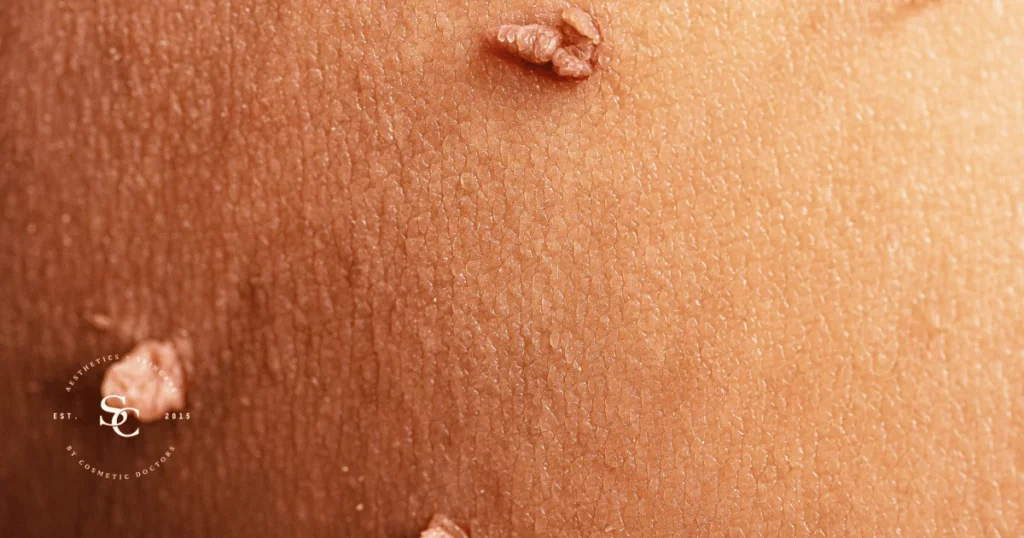Understanding Skin Tags: An Overview
Skin tags, also known as acrochordons, are benign growths of soft, hanging skin that can develop on various parts of the body. These common, flesh-colored or slightly darker growths typically appear in areas where skin rubs against skin or clothing. In this comprehensive guide, we will delve into the world of skin tags, exploring their nature, general impact, and providing insights into their diagnosis, causes, and treatment options.
Identifying the Symptoms of Skin Tags
Symptoms of skin tags include:
- Small, Hanging Skin: Skin tags are typically small, soft, and hanging from the skin’s surface.
- Flesh-Colored or Slightly Darker: They are often the same color as the surrounding skin or slightly darker.
- Common Locations: Skin tags often appear in skin folds, such as the neck, underarms, groin, and eyelids.
Causes and Risk Factors of Skin Tags
Understanding the causes and risk factors of skin tags is essential:
- Friction: Skin rubbing against skin or clothing in areas with skin folds or creases can lead to the development of skin tags.
- Age: Skin tags become more common with age, especially in middle-aged and elderly individuals.
- Genetics: A family history of skin tags may increase the likelihood of developing them.
- Obesity: Excess body weight can contribute to skin folds and friction, increasing the risk of skin tags.
Different Types and Stages of Skin Tags
Skin tags come in various types and stages:
- Fibroepithelial Polyps: The most common type, often found in skin folds.
- Filiform Skin Tags: Narrow and thread-like, often found on the face, neck, or eyelids.
Diagnosis: How Skin Tags are Detected
Diagnosing skin tags typically involves a visual examination by a healthcare provider. While skin tags are generally harmless, any new or changing growths should be evaluated by a dermatologist to rule out other conditions.
Treatment Options for Skin Tags
Several treatment options are available to remove skin tags:
- Excision: Surgical removal by cutting the skin tag with scissors or a scalpel.
- Cryotherapy: Freezing the skin tag with liquid nitrogen to remove it.
- Ligation: Tying off the base of the skin tag with a string or thread to cut off its blood supply.
- Electrocautery: Burning the skin tag off using an electrical current.
It’s essential to consult a healthcare provider or dermatologist before attempting self-removal, as some methods may carry risks of infection or scarring.
Prevention Strategies for Skin Tags
Preventing skin tags involves minimizing risk factors:
- Maintain Healthy Weight: Maintaining a healthy weight can reduce the risk of skin tags, as excess body weight can lead to skin folds and friction.
- Gentle Skin Care: Avoid excessive rubbing or irritation of the skin, especially in areas prone to skin tags.
- Regular Skin Checks: Perform regular self-examinations and consult a dermatologist if you notice any new or changing growths.
Impact of Skin Tags on Daily Life
Skin tags generally do not cause physical discomfort but can have cosmetic and emotional effects:
- Cosmetic Concerns: Some individuals may feel self-conscious about the appearance of skin tags, especially in visible areas.
- Clothing and Jewelry: Skin tags in certain locations, such as the neck, may interfere with clothing or jewelry.
Long-Term Management of Skin Tags
Managing skin tags may involve ongoing care:
- Regular Skin Checks: Continue to monitor the skin for new skin tags or changes in existing ones.
- Follow-Up Care: If you have a history of frequent skin tags or experience rapid growth, consult a dermatologist for evaluation and potential removal.
Mental and Emotional Considerations for Skin Tags
The psychological impact of skin tags should not be underestimated:
- Self-Esteem: Skin tags can affect self-esteem, particularly if they are perceived as cosmetically undesirable.
- Body Image: The presence of visible skin tags may influence self-perception and body image.
Support from healthcare providers and loved ones can help individuals cope with the emotional aspects of living with skin tags.
In conclusion, understanding skin tags, their causes, symptoms, diagnosis, treatment options, prevention strategies, and their impact on daily life is essential for effective management and maintaining skin health. Seeking professional guidance and emotional support can significantly contribute to managing this common dermatological condition.



















